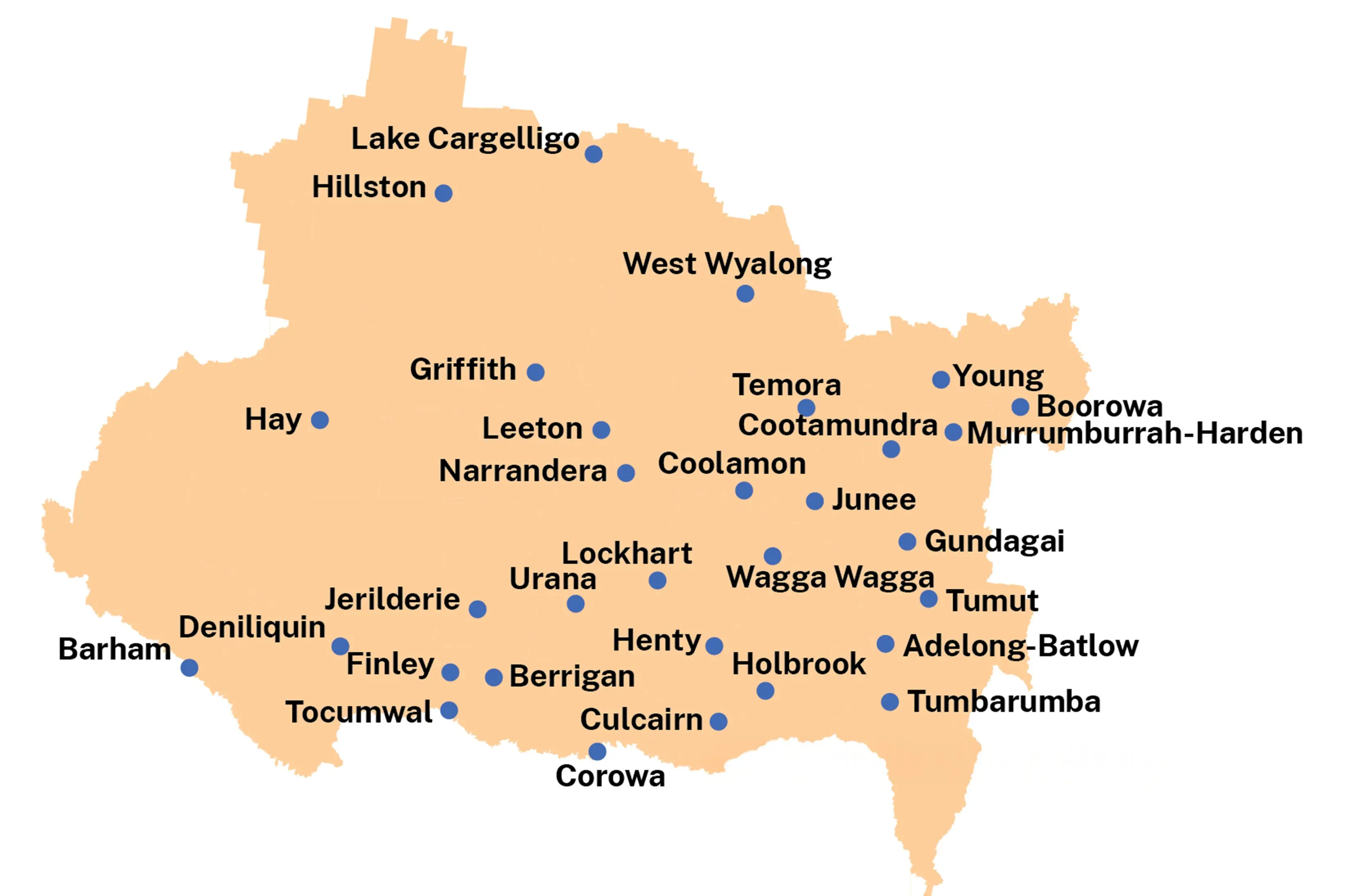PHOTO
In February 2025 Helen Dalton MP introduced a private members bill to the NSW Parliament in regards to splitting Murrumbidgee Local Health District.
The Health Services Amendment (Splitting of the Murrumbidgee Local Health District) Bill 2025 was introduced and first read n Thursday March 27 and in May 2025 the House agreed to refer the bill to the Committee on Community Services for inquiry and report.
The Bill proposed to split the MLHD into two local health districts.
In response the Murrumbidgee Local Health District has welcomed a constructive, productive discussion over the proposal.
Currently the MLHD covers 125,243 square kilometers with an estimated population of 245,196 (2019).
The district covers areas north west of Lake Cargelligo and Hillston, west of Barham and Hay, east of Boorowa, south east of Tumbarumba and all the way to Corowa in the south.
The private member's Bill was joined with a secondary bill to look at splitting the Hunter New England Local Health District, however, the original Bill was not introduced by NSW Health or the NSW Government.
"It is not a NSW Government or NSW Health initiative and is not supported by the Murrumbidgee Local Health District," a MLHD spokesperson said.
"The Bill was referred to the NSW Legislative Assembly Committee on Community Services (NSW) for inquiry and reporting.
"The Committee will start activity for this inquiry in late 2025 following work on its inquiry into the Health Services Amendment (Splitting of the Hunter New England Health District) Bill 2025."
MLHD has been very clear that it opposes the Bill and does not support its submission.
"The MLHD opposes the Bill," the spokesperson said.
"The split must be based on evidence - service delivery, workforce data, patient outcomes, and financial modelling.
"Evidence shows splitting the District would cost more, deliver less and put services at risk."
The MLHD said the Special Commission of Inquiry into Healthcare Funding reviewed the NSW public healthcare system in 2023-2025 and did not recommend splitting existing Local Health Districts.
"Splitting the district would not solve the workforce problems," the spokesperson said.
"Instead, it would fragment staffing, reduce flexibility and make it harder to recruit and retain health professionals."
MLHD hospitals are linked as part of clinical networks.
"Splitting these would disrupt referral pathways, lead to duplication of corporate services, increase costs, destabilise the workforce, delay access to care, and compromise health outcomes - particularly for those already facing health inequities," the spokesperson said.
According to NSW Health if the split was to go ahead the new District would need to duplicate governance and corporate functions.
"Costs to replicate existing corporate servies will run into the tens of millions of dollars, taking money away from patient care to create a bureacracy," a NSW Health spokesperson said.
"There are no additional funds.
"The current budget for MLHD would be split between the two Districts.
"It would also undermine the support for smaller, fixed cost hospitals and services in rural towns."





